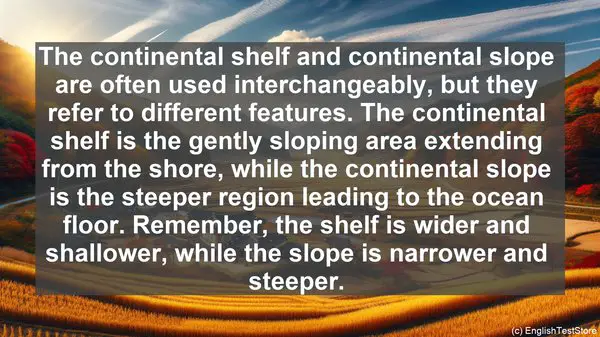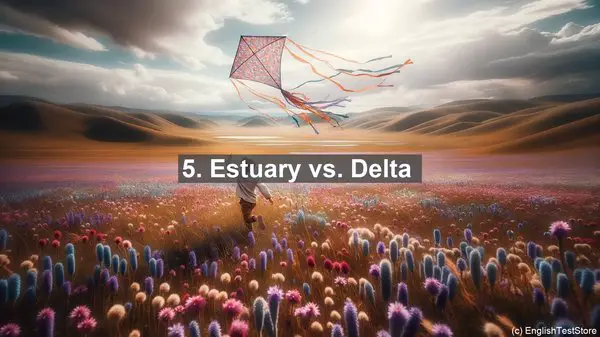Introduction: The Importance of Terminology
As you delve into the fascinating world of marine geology, you’ll encounter numerous terms that may seem similar but have distinct meanings. Understanding these words is essential for effective communication and comprehension. Today, we’ll explore the top 10 commonly confused words in marine geology.
1. Continental Shelf vs. Continental Slope
The continental shelf and continental slope are often used interchangeably, but they refer to different features. The continental shelf is the gently sloping area extending from the shore, while the continental slope is the steeper region leading to the ocean floor. Remember, the shelf is wider and shallower, while the slope is narrower and steeper.
2. Weathering vs. Erosion
Weathering and erosion are processes that shape the Earth’s surface, but they occur at different stages. Weathering is the breakdown of rocks into smaller pieces, while erosion is the transportation of these weathered materials. In marine geology, erosion by waves and currents plays a significant role in coastal evolution.
3. Tides vs. Waves
Tides and waves are both related to the ocean, but they have distinct causes and characteristics. Tides are primarily influenced by the gravitational pull of the moon and the sun, resulting in the periodic rise and fall of sea levels. Waves, on the other hand, are the result of wind energy transferring to the water surface, causing it to oscillate.

4. Sediment vs. Seafloor
The seafloor and sediment are interconnected but different components of the marine environment. The seafloor refers to the bedrock and underlying geological structures, while sediment encompasses the loose particles, such as sand, silt, and clay, that accumulate on top. These sediments provide valuable information about past environments and processes.

5. Estuary vs. Delta
Estuaries and deltas are both coastal features, but they form through different processes. An estuary is a partially enclosed coastal body of water where freshwater from rivers mixes with saltwater from the ocean. A delta, on the other hand, is a landform created by the deposition of sediment at the mouth of a river, often forming a triangular shape.
6. Upwelling vs. Downwelling
Upwelling and downwelling are terms used to describe vertical movements of water in the ocean. Upwelling occurs when deep, nutrient-rich water rises to the surface, often leading to high biological productivity. Downwelling, on the other hand, is the sinking of surface water, which can result in the transport of heat and dissolved gases to deeper layers.
7. Littoral Zone vs. Pelagic Zone
The littoral zone and pelagic zone are distinct regions in the marine environment. The littoral zone, also known as the intertidal zone, is the area between the high and low tide marks, characterized by regular exposure to air and water. The pelagic zone, on the other hand, refers to the open ocean, away from the coast and the seafloor.
8. Fjord vs. Bay
Fjords and bays are both coastal features, but they have different origins. A fjord is a long, narrow inlet with steep sides, often formed by glacial activity. Bays, on the other hand, are more rounded and typically result from a combination of erosion and sea-level changes. Both fjords and bays can provide sheltered areas for marine life.
9. Coral Reef vs. Atoll
Coral reefs and atolls are both formed by coral organisms, but they have distinct structures. A coral reef is a ridge or mound of coral and other organic material, often found near coastlines. An atoll, on the other hand, is a circular or horseshoe-shaped coral reef that surrounds a lagoon. Atolls are typically found in open ocean settings.
10. Turbidity vs. Transparency
Turbidity and transparency are terms used to describe the clarity of water. Turbidity refers to the cloudiness or haziness caused by suspended particles, such as sediment or plankton. Transparency, on the other hand, indicates the degree to which light can pass through the water. Both factors can have significant implications for marine life.
